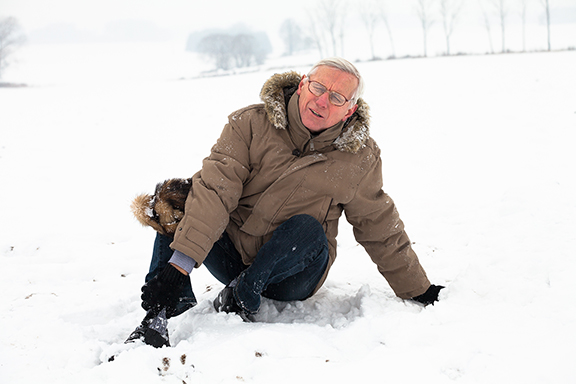
Submitted by Elizabeth Madlem, APN, The Bone Health Clinic at Millennium Pain Center
A simple thing can change your life — like tripping on a rug or slipping on a wet floor. If you fall, you could easily break a bone, like thousands of older men and women do each year. A broken bone might not sound that serious, and for healthy people with strong bones, it’s not. For older people, a broken hip, pelvis, or vertebrae often leads to a downward spiral in physical and mental health that ultimately results in death.
People are often unaware of the frequent link between a broken bone and osteoporosis. Osteoporosis, known as the “silent disease” because it progresses without symptoms, is a condition where the bones become brittle and fragile. It is considered to be a global public health problem that is estimated to affect over half of all Americans over age 50. Bones affected by osteoporosis may become so fragile that fractures occur spontaneously or as the result of minor bumps, falls, or normal stresses and strains such as bending and lifting.
Consequently, falls are especially dangerous for people who are unaware that they have osteoporosis.
Many things can cause a fall. As people age, their eyesight, hearing, and reflexes might not be as sharp as they once were. Diabetes, heart disease, or problems with the thyroid, nerves, feet, or blood vessels can affect a person’s balance. Some medicines can cause dizziness, making a fall more likely.
Following are a few tips to help avoid falls:
- Stay physically active. Plan an exercise program that is right for you. Be sure to include specific exercises to work on balance.
- Have your eyes and hearing tested. Even small changes in sight and hearing may cause you to fall. When you get new eyeglasses, take time to get used to them.
- Find out about the side effects of any medicine you take. If a drug makes you sleepy or dizzy, tell your doctor or pharmacist.
- Get enough sleep. If you are sleepy, you are more likely to fall.
- Stand up slowly. Getting up too quickly can cause your blood pressure to drop. That can make you feel wobbly.
- Use a cane or walker if you need help feeling steady when you walk. Make sure it is the right size for you and the wheels roll smoothly. This is very important when you’re walking in areas you don’t know well or in places where the walkways are uneven.
- Be very careful when walking on wet or icy surfaces. Better yet, don’t even go out when it’s wet or icy!
- Wear non-skid, rubber-soled, low-heeled shoes, or lace-up shoes with non-skid soles that fully support your feet. Don’t walk around in socks or in shoes and slippers with smooth soles.
Most falls happen in the home. Following are some changes you can make in your surroundings:
- Have sturdy handrails on both sides of stairs and use them! If you must carry something while you’re on the stairs, hold it in one hand and use the handrail with the other. Don’t let what you’re carrying block your view of the steps.
- Make sure there is good lighting with light switches at the top and bottom of stairs and on each end of a long hall.
- Keep areas where you walk free of clutter. Don’t leave books, papers, clothes, and shoes on the floor or stairs.
- Check that all carpets are fixed firmly to the floor so they won’t slip. Don’t use throw rugs or small area rugs.
- Mount grab bars near toilets and on both the inside and outside of your tub and shower.
- Place non-skid mats, strips, or carpet on all surfaces that may get wet.
- Remember to turn on night lights and keep a light by your bed.
- Keep electric cords and telephone wires away from walking paths.
- Arrange your furniture, especially low coffee tables, so they are not in your way when you walk.
- Make sure your sofas and chairs are the right height for you to get in and out of them easily.
- Keep items you use often within easy reach.
- Don’t stand on a chair or table to reach something that’s too high — use a “reach stick” instead or ask for help. If you use a step stool, make sure it is steady and has a handrail on top.
Even though bones do not break after every fall, it’s important to lower the chances of falling and take steps to increase your bone health, so if you do fall, you will not break a bone. People who have fallen and broken a bone nearly always become fearful of falling again. As a result, they often limit activities and experience a general decline in overall health and happiness.
For more information on bone health and osteoporosis, you may contact The Bone Health Clinic at Millennium Pain Center,
309-662-4321. They are located at 1015 Mercer Ave. in Bloomington. Shannon Laesch and Elizabeth Madlem are certified bone-health consultants. The clinic provides screening, diagnosis and a comprehensive treatment plan for people who have or are at risk of developing osteoporosis.

